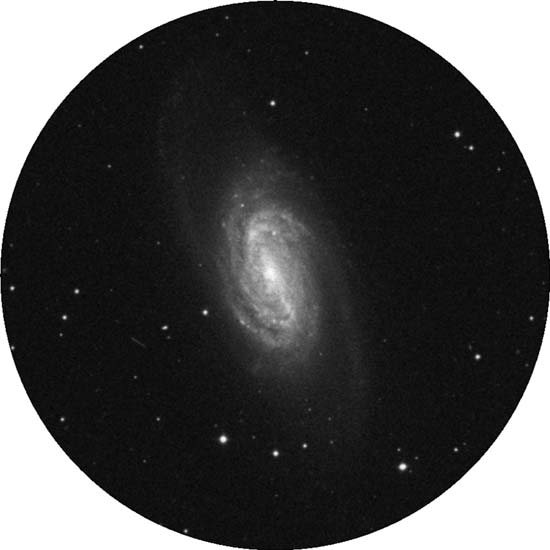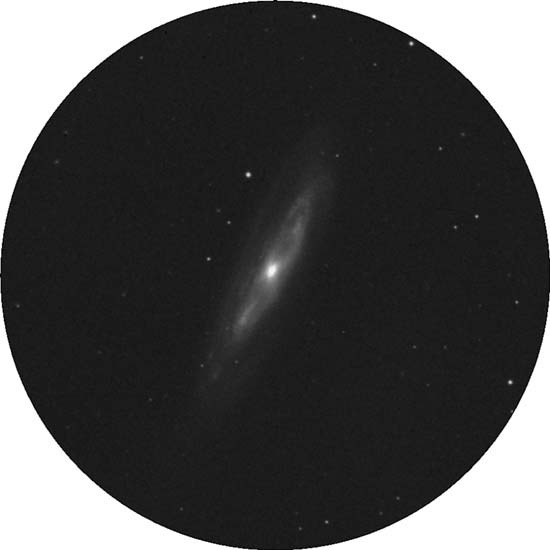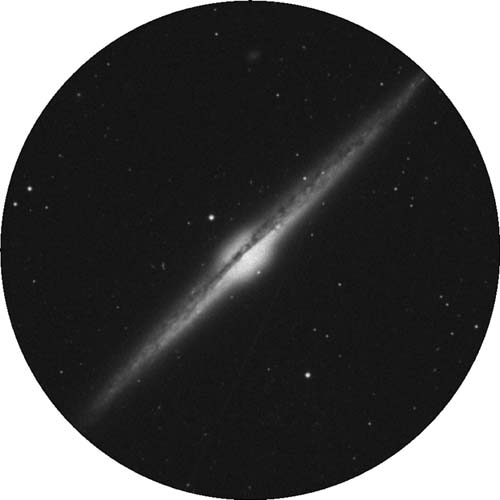Greetings, fellow SkyWatchers! Sorry to be so late, but satellite internet connections and electrical storms don’t mix! Even though there’s not a snowball’s chance in the desert of observing here tonight, don’t let that stop you from enjoying some of the finest galaxies you’ll ever trip the light fantastic with! Find yourself a dark sky site and enjoy three of my favorites of the season… and share your observations! This time I’ll join you in your backyard….
June 4, 2010 – Did you ever wonder who was the first to organize an astronomy group? No less a personage than Baron Franz Xaver Freiherr von Zach. Born on this date in 1754, von Zach was the director of an observatory near Gotha, and in 1798 he organized the first congress of astronomers, with Joseph LaLande as the honored guest. He later formed another group of two dozen astronomers to help locate the ‘‘missing planet’’ between the orbits of Mars and Jupiter. I wonder what they discovered?
Tonight we’ll head toward Leo for another galaxy worth a visit. . . and even binoculars can spot it! You’ll need to identify slightly fainter Lambda to the southwest of Epsilon and head south about one finger-width for NGC 2903 (RA 09 32 09 Dec +21 30 02). William Herschel discovered this awesome oblique spiral galaxy in 1784. At slightly brighter than magnitude 9, it’s in easy range of most binoculars. It is odd that Messier missed this one, considering both its brightness and the fact that three of the comets he discovered passed by it! Perhaps it was cloudy when Messier was looking, but we can thank Herschel for cataloging NGC 2903 as H I.56.
Although small optics will only perceive this 25-million-light-year-distant beauty as a misty oval with a slightly brighter core region, larger aperture will light this baby up. Soft suggestions of its spiral arms and concentration will begin to appear. One such knot is star cloud NGC 2905—a detail in a distant galaxy so prominent that it received its own New General Catalog designation. NGC 2903 is roughly the size of our own Milky Way and includes a central bar, yet the nucleus of our distant cousin has ‘‘hot spots’’ that were studied by the HST and extensively by the Arecibo telescope. Although our own galactic halo is filled with ancient globular clusters, this galaxy sports brand new ones! Be sure to mark your notes with your observations, because many different organizations consider this to be on their ‘‘Best of’’ lists.
June 5, 2010 – Let’s take a look at John Couch Adams, a discoverer of Neptune who was born on this date in 1819. Said he: ‘‘. . .the beginning of this week of investigating, as soon as possible after taking my degree, the irregularities in the motion of Uranus. . .in order to find out whether they may be attributed to the action of an undiscovered planet beyond it.’’ But that’s not all Adams contributed! He was the first to associate the Leonid meteor shower with the orbital path of a comet, and he also observed the Moon.
Tonight we’ll take a look at our moving universe, and we begin by locating 5th magnitude 6 Comae Berenices about three finger-widths east of Beta Leonis. Remember this star! We are going on a galaxy hop to a Mechain discovery that is less than a degree west, and its designation is M98 (RA 12 13 48 Dec +14 53 58). At magnitude 10, this beautiful galaxy is a telescope-only challenge and a bit on the difficult side for small aperture. Long considered part of the Virgo Cluster , M98 is approaching us at a different rate than other cluster members, giving rise to speculation that it may simply be in the line of sight. Quite simply put, it has a blue shift instead of red! But considering that all these galaxies (and far fainter ones than we can see), are in close proximity leads some researchers to believe it is a true member by virtue of the extreme tidal forces that must exist in the area—pushing it toward us at this point in time, rather than away.
In a small telescope, M98 will appear like a slim-line with a slightly brighter nucleus, a characteristic of an edge-on galaxy. To large aperture, its galactic disk is hazy and contains patchiness in structure. These are regions of newly forming stars and vast regions of dust, yet the nucleus remains a prominent feature. M98 is a very large galaxy, so be sure to use a minimum of magnification and plenty of aversion to make out small details in this fine Messier object!
June 6, 2010 – Today we begin with the 1932 birth on this date of David Scott, the seventh person to walk on the Moon and the first to ride the Lunar Rover on the surface during the Apollo 15 mission. Sharing his birth date, but almost 500 years earlier, was the astronomer Regiomontanus (1436). Regiomontanus made observations of a comet, which were accurate enough to associate it with Comet Halley 210 years later, and his interest in the motion of the Moon led him to make the important observation that lunar distances could be used to determine longitude at sea!
No galactic tour through Coma Berenices would be complete without visiting one of the most incredible ‘‘things that Messier missed.’’ You’ll find NGC 4565 (RA 12 36 21 Dec +25 59 13) located less than 2 degrees east of 17 Comae. Residing at a distance of around 30 million light-years, this large 10th magnitude galaxy is probably one of the finest edge-on structures you will ever see. Perfectly suited for smaller scopes, this ultra-slender galaxy with the bright core has earned its nickname of the ‘‘Needle.’’ Although photographs sometimes show more than what can be observed visually, mid-to-large aperture can easily trace out NGC 4565’s full photographic diameter.
Although Lord Rosse in 1855 saw the nucleus of the Needle as stellar, most telescopes will resolve a bulging core region with a much sharper point in the center and a dark dust lane upon aversion. The core itself has been extensively studied for its cold gas and emission lines, pointing to the fact that it has a barred structure. This is much how the Milky Way would look if viewed from the same angle! It, too, shines with the light of 30 billion stars. Chances are NGC 4565 is an outlying member of the Virgo Cluster, but its sheer size points to the fact that it is probably closer than the others. If we were to place it at the accepted distance of 30 million years, its diameter would be larger than any galaxy yet known! Get acquainted with it tonight… Because big is beautiful, too!
Until next week? Keep reaching for the stars!
This week’s awesome images are (in order of appearance): NGC 2903, M98 and NGC 4565 are from Palomar Observatory, courtesy of Caltech. We thank you so much!





Thanks Tammy! I went to your home page/observatory page and saw that you have a 31″ telescope… sighs and has a moment of aperture envy. Here in Sonoma County, we have the Roger Fergusson observatory up at Sugarloaf Ridge State Park. They built a 40″ Dobson, which was supposed to be the premier scope for the observatory… unfortunately the mirror was incorrectly ground and the mount was not substantial enough for the weight of the glass… a big disappointment for everyone. Then, a local astronomer donated his 24″ Dobson as a ‘temporary’ scope. His name is Bill Russell. That scope is still the main scope the public looks thru on astronomy nights. Well, Mr. Russell came to the astronomy club/group I used to belong to (now defunct) called the Wragg Canyon Star Gazers, below Lake Berryessa, in Napa County. He brought his then portable 24″ twice for viewing twice. The second time he showed up was after he’d been up in the Lake Tahoe area for a week of observing. When he arrived he was totally beat/dead tired but set up the scope anyway…. then after giving me permission to use the scope, went into his camper and promptly fell asleep. MAANO MAN did I ever get LOST with that scope! I was used to using 4″ and 8″ scopes… and the 24″ was a WHOLE different enchilada! Small fuzzies were now huge galaxies! Half the time I wasn’t even sure WHAT I was looking at! That didn’t stop me though… I ended up staying awake the whole night! Now, I have to stand in line to use that scope… oh well… that one night was a GREAT night! HO!
Here comes (another) comet McNaught! YIPPEE!! I just loves cometszuh!
As per APOD for 06.07.10
http://antwrp.gsfc.nasa.gov/apod/astropix.html